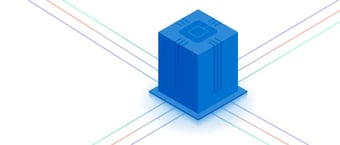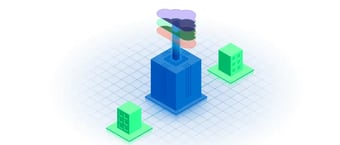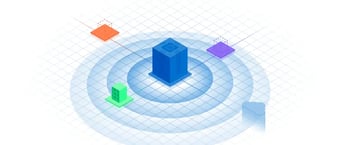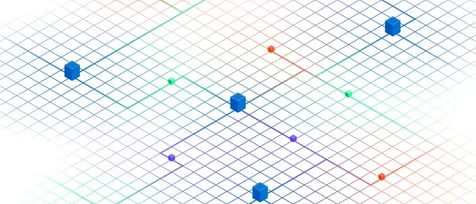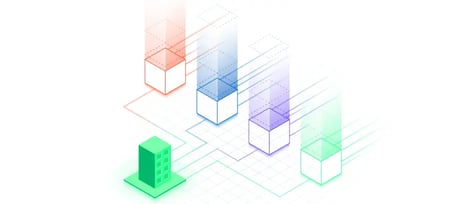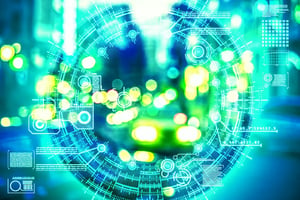
More Power! Behind-the-Meter Power Systems for Data Centers
Data center providers are exploring behind-the-meter power systems as digital transformation booms and AI is ravenously adopted. There are several onsite power technologies that can help deliver the power density data center customer needs now and into the future, a business-critical imperative for all stakeholders.
The energy challenge largely can be attributed to high-density servers, which require exponentially greater amounts of electricity to operate and generate more heat to manage. The average power density today is around 15 kW/rack, but AI workloads will dictate 60-120 kW/rack to support accelerated servers in close proximity.1 And while an average server in a data center generates about 1.5 kW of heat, AI-specific servers using new GPUs (graphic processing units) can generate five or six times as much heat.2
Many data center providers are now evaluating or have already begun to include onsite power generation by:
- Adding onsite power generating capabilities to complement the power they buy from utilities for daily operation
- Adding backup power capacity that kicks in when needed
- Generating all the power they need to run the data center with an onsite solution
By establishing their own behind-the-meter (BTM) power generation capabilities such as microgrids fueled by gas turbines, fuel cells or modular nuclear reactors, as well as renewable energy sources including solar and wind, data center operators can increase their scalability, flexibility and reliability even as the demand for ever more power grows.
According to Bloom Energy, in 2030, 38% of data center facilities are expected to use some onsite generation for primary power, up from 13% a year ago.3 Notably, 27% of data center facilities are expected to be fully powered by onsite generation by 2030.4
Behind-the-Meter Power Generation Technologies
Depending on their size, growth plans and client requirements, data centers have a variety of power generation technologies from which to choose when implementing BTM technologies.
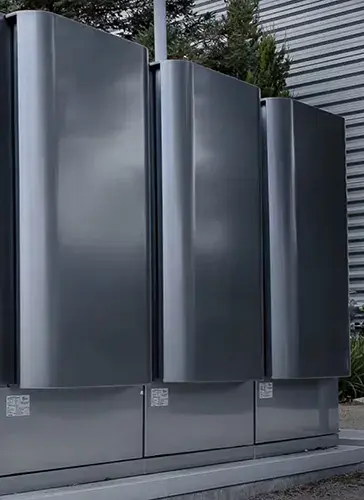
Here’s a brief survey of commonly employed solutions:
Fuel Cells
Fuel cells – which can be used to produce primary or supplemental power for data centers – are electrochemical devices that convert gases such as hydrogen, methane or biogas into electricity through a chemical reaction with oxygen. This process produces only water as a by-product, making it an exceptionally sustainable choice for powering data centers.
Fuel cells provide a reliable and efficient energy supply that is crucial for data centers, ensuring clean and continuous power when needed most, unlike intermittent power sources such as solar and wind.
In the current business climate in which minimizing “time-to-power” is crucial, fuel cells are emerging as pivotal solutions, offering a clean, efficient and rapidly deployed supplemental, primary or backup power source.
In fact, CoreSite implements solid oxide fuel cells in both its SV9 data center in Silicon Valley and at BO1, in Boston, to create a “hybrid” utility + fuel cell power solution.
Reciprocating Engine Generator
Using the same type of engine that powers your car or truck might not be the first thing that comes to mind as applicable to data centers. But it can be, if it’s a lot bigger.
A reciprocating engine, commonly referred to as a “piston engine,” utilizes the back-and-forth motion of the pistons to turn a crankshaft and drive a generator. Diesel generators have been a primary emergency power source for data centers for decades.5 They offer data center operators a great deal of flexibility both for use as backup power solutions as well as components of microgrids.
According to Microgrid Knowledge, reciprocating engines can be designed to burn a variety of fuels; some burn only diesel and some are fired only by natural gas. But many are dual-fuel, meaning that they can burn either gaseous or liquid fuels. The capacity of individual reciprocating engines typically ranges from less than 1 MW to as much as 20 MW and often groups or sets of engines are installed side-by-side so they can be switched on or off as the precise needs of the grid vary.
Geothermal
In its report, The Potential for Geothermal Energy to Meet Growing Data Center Electricity Demand, the Rhodium Group think tank provides an updated perspective on new technologies to tap geothermal energy to help power data centers. Geothermal is particularly promising as a source of electricity generation given its renewable nature, low or zero greenhouse gas emissions and high availability; they can generate electricity on a near-constant basis.
Meta and Google are investing in geothermal energy, exploring whether it can indeed deliver carbon-free energy to the grid around the clock:
-
Meta has partnered with Sage Geosystems to develop a 150-megawatt geothermal energy project in Texas using advanced fracking techniques.
-
Google is collaborating with Fervo Energy on a 5-megawatt pilot geothermal plant in Nevada, with plans for larger projects in Utah.
Solar
It’s increasingly common to see solar panels on residential and commercial building rooftops and adjacent sites. Solar technologies convert sunlight into electrical energy either through photovoltaic panels or through mirrors that concentrate solar radiation. This energy can be used to generate electricity or be stored in batteries or thermal storage.
Because sunlight is available only during the day, it’s not realistic to try to run a data center completely on solar generated power. Still, many data centers utilize solar power, either generated onsite or purchased from large-scale solar farm companies, as one component of their total BTM power generation strategy.
Wind
Wind turbines can also play a significant role in powering data centers although, like solar, wind turbine power generation cannot be relied upon for consistent, 24/7 power generation. Modern onshore turbines have a capacity of 3 to 4 MW and offshore turbines have a capacity of 8 to 12 MW, according to the International Renewable Energy Agency.
TechTarget reports, while wind power alone may not be sufficient to meet the large energy demands of modern data centers, especially those powering AI workloads, wind power remains a valuable component of a diversified renewable energy strategy.
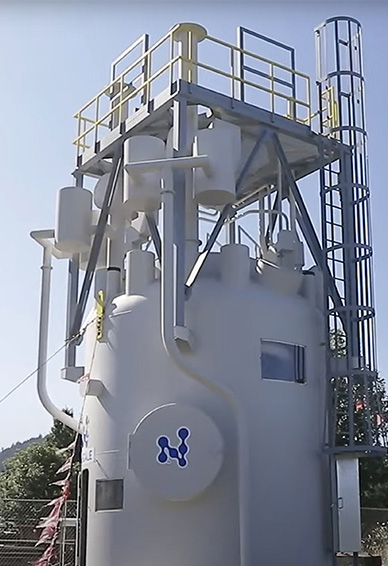
Small Modular Nuclear Reactors
Written off nearly 50 years ago as too dangerous to run (at least in the U.S.), nuclear-generated power is back in play. Data center operators are exploring the construction and implementation of modular nuclear power plants situated onsite or near their data center campuses.
A recent report from the Information Technology & Innovation Foundation (ITIF) states that “small modular reactors (SMRs) are the future of nuclear power.” 6
ITIF notes that “Big tech companies have already taken notice. Amazon, Google, and Microsoft are investing in SMR ventures to meet the soaring power demands of their AI data centers. With interconnection delays and grid constraints mounting, SMRs could provide dedicated, behind-the-meter solutions that avoid the bottlenecks of traditional energy infrastructure.”
A few more reasons SMRs are generating interest in the data center industry
- They are designed to be built (partly or completely) in a factory, rather than constructed on-site. Large-scale factory production can exploit economies of scale.
- Traditional reactors take 8-15 years to build, whereas SMRs can be built in 3-5 years due to modular assembly. The modular construction approach allows for faster deployment, addressing the time-to-power issue data centers face.
- Because they can be sized from 1 MW to 300 MW or more, they can meet very different needs in different markets.
- SMRs’ small footprint and long fuel life (sometimes operating for several years without refueling) make them especially attractive where logistics pose major challenges.
Natural gas-powered generators
The U.S. supplies approximately one-quarter of the world’s natural gas, so it’s no surprise that data center operators are looking to natural gas-powered generators to help meet the requirements of clients’ AI applications and other high-density workloads.
Natural gas-powered generators are available from numerous companies for both rental and purchase. Aggreko, for example, offers a range of modular natural gas generators capable of delivering 200 kW to 1500 kW of scalable power, from single units to multi-megawatt installations, that can be quickly deployed.
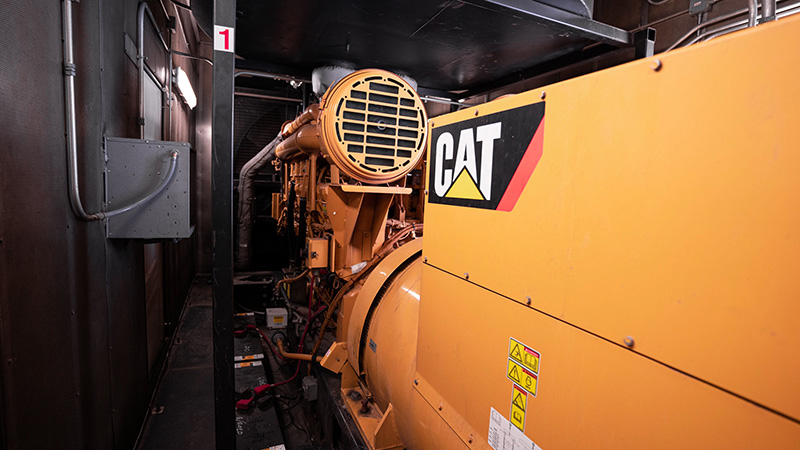
Gas-powered turbines
Combustion turbines are designed to meet peaks in power demand very quickly. They operate much like a jet engine, drawing in air at the front of the unit, compressing it, mixing it with fuel and igniting it. The combustion occurs immediately – allowing gases to then expand through turbine blades connected to a generator to produce electricity. Combustion turbine power plants are normally run on natural gas as fuel; however, they can also be run on low-sulfur fuel oil, if needed.
In early 2025, a subsidiary of Chevron Corporation announced a partnership with GE Vernova to build a new company to develop scalable, reliable natural gas-powered solutions for U.S.-based data centers. The joint development aims to establish the first multi-gigawatt co-located power plant and data center.
The partnership’s first projects, designed to serve colocation data centers in the U.S. Southeast, Midwest and West regions, are expected to leverage seven U.S.-made GE Vernova 7HA natural gas turbines.
Challenges Drive Innovation
Energy is acknowledged as a significant bottleneck to data centers being able to keep pace with demand for computing power in the age of AI. Those who have been in the industry for a few decades will remember that similar concerns arose when cloud computing first was available.
These are big challenges, no doubt. But, working together, utilities, data center providers, chip manufacturers, data transport solutions developers and all the other stakeholders in the data center industry can overcome them.
Know More
Visit CoreSite’s Knowledge Base to learn more about the ways in which data centers are meeting clients’ constantly increasing power and other infrastructure requirements.
The Knowledge Base includes informative videos, infographics, articles and more. This digital content hub highlights the pivotal role data centers play in transmitting, processing and storing vast amounts of data across both wireless and wireline networks – acting as the invisible engine that helps keep the modern world running smoothly.
References
1. AI Power and Cooling Requirements Lift Data Center Physical Infrastructure Market to Over $46 Billion in 2028, Dell’Oro Group
2. Best Practices for Deploying Liquid Cooling in Existing Data Centers, Data Center Frontier
3. 2025 Data Center Power Report, Bloom Energy
4. Onsite Generation Expected to Fully Power 27% of Data Center Facilities by 2030, Bloom Energy
5. Things That Go Together: AI, Cloud Computing, Data Centers, and Backup Diesel Generators, Engine Technology Forum
6. Small Modular Reactors Are the Future of Nuclear Power; New Report Recommends Policy Shift for Energy Department, ITIF


